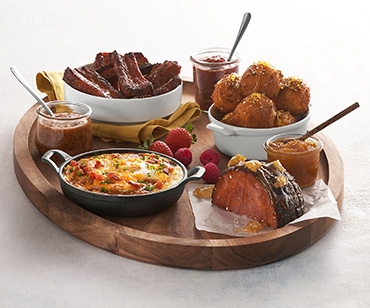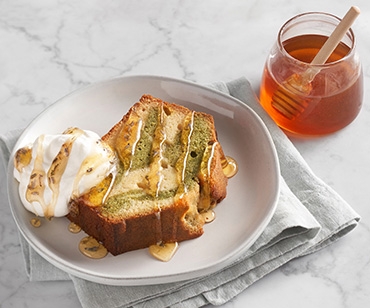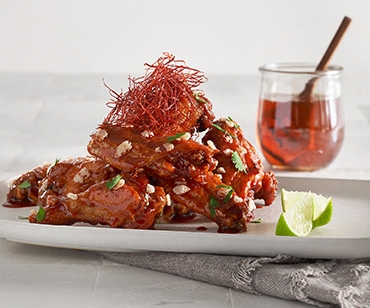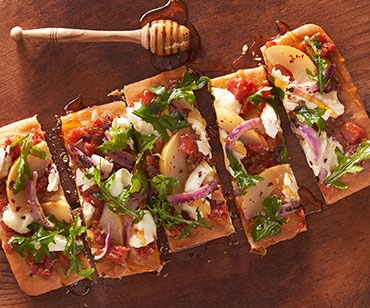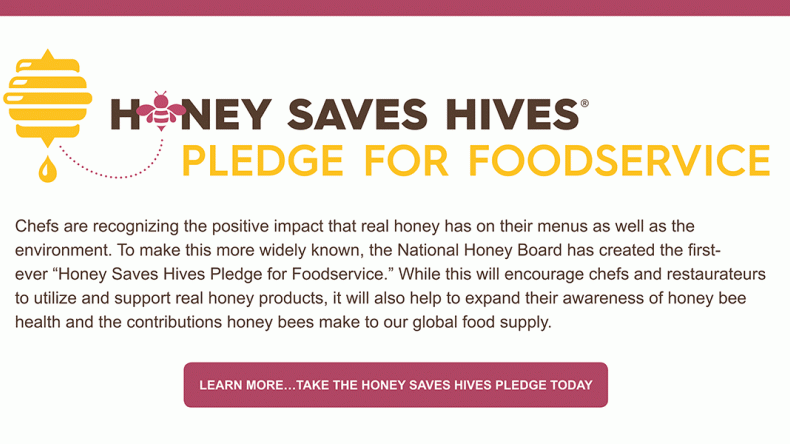Sponsored Content
Real Honey: Elevating Menus and Preserving the Environment
Flavorful, Versatile and Valuable
Real honey, a completely natural and versatile ingredient, has always had a place on menus across the country. Whether casual or upscale, chefs understand that real honey provides a unique flavor palette and functionality that elevates their dishes. Beyond its culinary allure menuing real honey offers an educational value to restaurateurs and patrons alike about the necessity of honey bees, their role in pollination and the immense contribution honey bees make to a plentiful, sustainable global food supply.
According to statistics reported by Datassential, honey appears in an extensive range of menu items including classic American cuisines, sandwiches and pizza. It is also being incorporated into a variety of sauces and condiments including honey mustard, hot honey, sriracha honey and honey ginger, most commonly paired with chicken in salads, sandwiches, fried chicken, chicken and waffles and boneless wings.
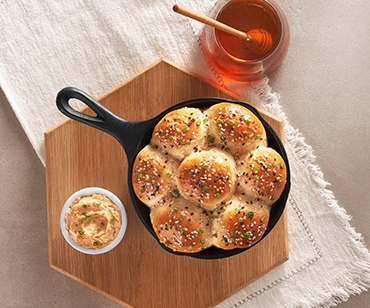
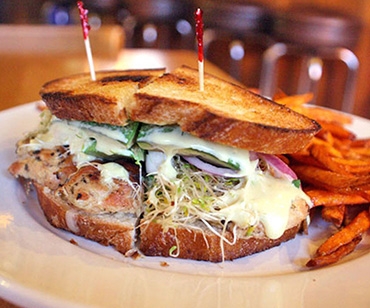
The National Honey Board estimates there are more than 300 unique or monofloral honey varietals in the United States, each with a distinctive color and flavor profile based on the flowers they pollinate and collect nectar from, and thousands more worldwide. With the wide variety of flavor profiles accessible to chefs and real honey’s diverse functionality, culinary innovators around the country are experimenting with the many applications and ways real honey can expand their menu offerings.
To learn more about real honey, the latest trends, and find inspiration for your restaurant, CLICK HERE.
Helen Cameron, Co-Owner of Chicago's Uncommon Ground has incorporated honey into many of her dishes, all produced from beehives maintained on the restaurant's rooftop farm. When asked about her rooftop farm and beehives, Chef Cameron says, "Maintaining a rooftop farm was a lovely experience. We created a balanced ecosystem; grew an impressive variety of fruits and vegetables, including some uncommonly flavorful tomatoes; and had access to some truly delicious honey."
The honey-mustard sauce for Helen's Grilled Chicken Sandwich gives the dish a sweet-savory twist and has made it one of the restaurant's most popular and enduring. Honey also infuses flavor in their Organic Yogurt & Granola Parfait with Berries & Honey, Honey Cake topped with Honeyed Mascarpone, a house-made infused vodka featuring ginger and honey, and appears in coffee drinks including the Buzzy Bee (espresso with honey and oat milk) and Honey Rose Macchiato (espresso, honey, rose syrup topped with honey and sea salt).
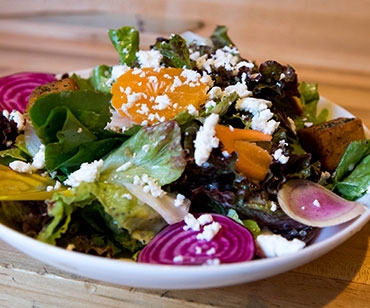
Daniel Asher, Chef at Colorado's River and Woods and Ash'kara, is another chef who has discovered the versatility and value of real honey. He offers "I adore honey. It can be used just about everywhere. We combine clover honey with heirloom flours to make our pita. Our Alfalfa Honey Poppyseed Vinaigrette served on the seasonal Farmer's Market Salad is a perennial favorite." He has also used honey infused with chamomile blossoms to elevate glazed carrots into a wonderful expression of sweet and savory.
While Asher is an obvious honey enthusiast, he's equally passionate about preserving vibrant and interconnected ecosystems and embraces foods that are responsibly produced and artfully transformed. (Hear more from Asher in his July 2022 Plate magazine interview.)
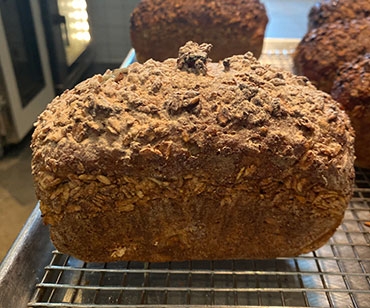
Similar sentiments are expressed by Charbel Abrache, Head Pastry Chef at Washington DC's Seylou Bakery & Mill. Abrache says, "It's important to respect the land and work with local farmers who share our concerns for the environment. The fun part is seeing what we can make from what they offer."
When Abrache mentions how well honey works in Seylou's challah, he also mentions its value in their Chocolate Cherry Sourdough bread; Honey and Spelt Cake with whipped goat cheese, honey, berries and nectarines; Buckwheat and Honey Cake with whipped honey yogurt and honey poached rhubarb; and Apple, Oat, Honey and Rye Bread.
Recipe Innovations from the National Honey Board
To learn more about the National Honey Board and innovative ways to integrate honey into your menu, CLICK HERE.
The Essential Nature of Bees
Honey bees are responsible for pollinating most of the fruits and vegetables that are at the core of our diets, contributing to approximately one-third of the world's food supply. For commercial agriculture, honey bees are the most effective pollinators, used to pollinate more than 100 different agricultural crops as well as wild and native plants. Based on reports from The Bee Conservancy, habitat loss, changes in weather patterns and excessive use of agrochemicals are causing more than half of North America's native bee populations to decline.
Chefs Supporting a Sustainable Food Supply
Many chefs are becoming fierce advocates for environmental stewardship and sustainable agriculture by building networks of like-minded producers, growers and food artisans, as well as establishing farms of their own, some that include beehives.
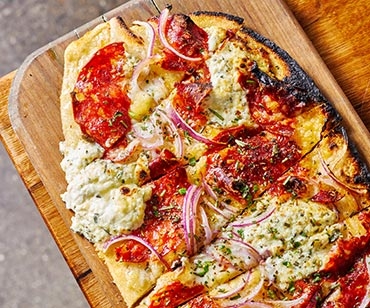
Chris Gadulka, Executive Chef at Sylvan Table in Detroit, operates a 4-acre farm with 16 beehives. He is passionate about living off the land through local and sustainable farming and likes the educational benefits it provides. He mentions, "We involve our staff in the farm. We also give tours to the community, raising everyone's awareness of sustainable farming and the benefits of real honey."
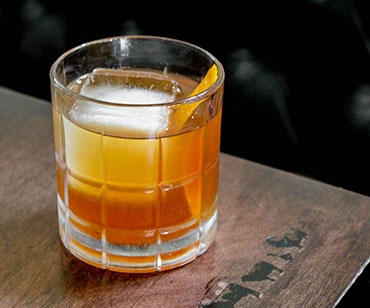
When asked about applications for honey, he mentions that honeycomb makes a wonderful brittle and that berries fermented with honey, used as a topping or garnish, adds a distinctive sweet and acidic character. Not surprisingly, the honey produced by his bees has found its way into many of his dishes, such as Bee Sting Flatbread and Milk and Honey Cake, some of the restaurant's most popular.
Taking restaurant farms a bit farther, TJ Callahan, Co-Founder and Owner of Farm Bar in Chicago, also wears the moniker of farmer at Brown Dog Farm. This 140-acre farm has 35-40 beehives, a sizeable vegetable garden and a 200-tree fruit orchard. When asked why he goes to such extremes, he comments, "Everything we grow is authentically ours. It's the real deal. It's produced in a way that's good for the environment and has tremendous storytelling potential and positive impact."
Their honey has become a valued ingredient in the restaurant's bar menu, especially in the Brown Dog Old Fashioned. Additionally, in partnership with a local meadery, they've transformed a portion of their honey harvest into a highly popular sparkling mead. Callahan mentions "It seems that anything we do with our honey is a grand slam."
While real honey is making its way onto more menus and chefs’ preferred ingredient lists, it is also an opportunity for chefs to support the vital role that honey bees play as pollinators, and provide incredibly delicious options for their patrons. There are many challenges ahead to ensure the continuity of honey bees and protecting our food supply. But one way chefs can make an impact is by increasing the number of dishes that feature real honey on their menus, which is good for business and good for the environment.
To learn more about real honey, the issues facing farmers and beekeepers, and how you can make a difference, CLICK HERE.
To learn more about the National Honey Board and the resources it offers, CLICK HERE.
1Datassential is the industry's leading food research and insights firm.
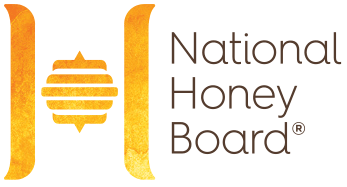
- Log in or register to post comments

